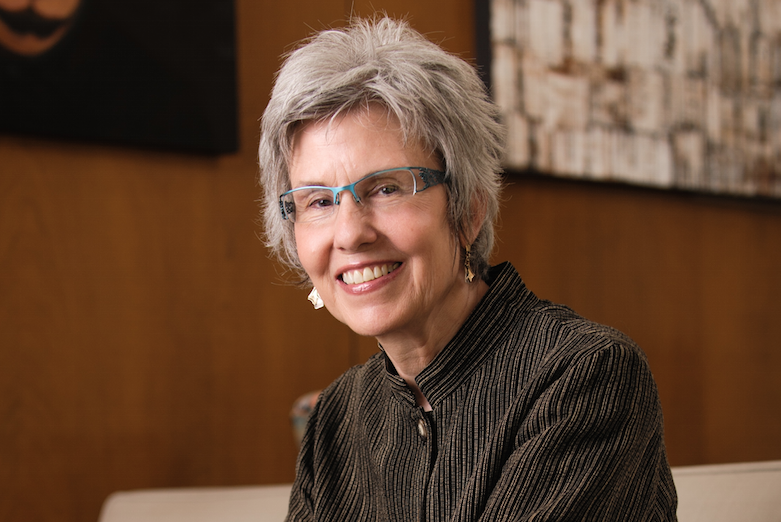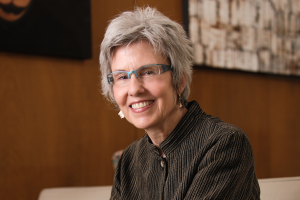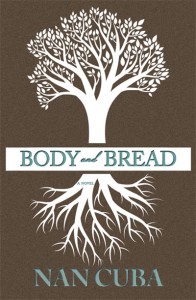Nan Cuba received her MFA from the Program for Writers at Warren Wilson College. She has taught English and creative writing at several universities and high schools. She is founder and executive director emeritus of Gemini Ink, a nonprofit literary center, and is currently writer-in-residence at Our Lady of the Lake University. She is author of the novel Body and Bread (Engine Books, 2013), which won the PEN/Southwest Award in Fiction and the Texas Institute of Letters Steven Turner Award for Best Work of First Fiction.
Fiction writers have long channeled grief over the death of a loved one into their work, but that impulse is intensified when the person commits suicide. My brother, Paul Brindley, was twenty-six and I was twenty-three when he shot himself. In spite of his obvious depression about an accident that had left him a paraplegic, each person in my family felt guilty. In the first line of chapter one in my novel, Body and Bread, the protagonist, Sarah, says, “My first life ended when Sam committed suicide.” Sarah is an anthropologist, and the book is her attempt to understand how and why Sam died, and who was responsible. My unconscious motivation was to investigate the same questions but also to experience a spiritual connection to my brother, Paul.
When Poe’s cousin-wife, Virginia Clemm, died, he wrote “Annabel Lee” and “Ulalume.” Mary Shelley’s first child, a daughter, was born prematurely and died a few days later, the same year Shelley began Frankenstein. The next year, Shelley gave birth to a son, and the following year, a daughter. This means that while she was writing the novel, she was pregnant most of the time after her first baby died. According to Ruth Franklin in her essay, “Was ‘Frankenstein’ Really About Childbirth?” a journal entry Shelley wrote shortly after her daughter’s death reads, “Dream that my little baby came to life again; that it had only been cold, and that we rubbed it before the fire, and it lives.” Franklin argues that this echoes Dr. Frankenstein, who hopes to “infuse a spark of being into the lifeless thing that lay at my feet.” The creature’s birth occurs after “days and nights of incredible labor and fatigue.” Even though Frankenstein is seen as a cautionary tale against intellectual hubris, the death of Shelley’s daughter must have influenced the story. What parent wouldn’t want to bring her dead child back to life?
When Charles Dickens’ beloved sister-in-law, Mary Scott Hogarth, a seventeen-year-old Scottish girl, died suddenly, he had visions of her, dreamed of her frequently, and described her in a letter to John Forster as “that spirit which directs my life, and…has pointed upwards with an unchanging finger for more than four years past.” According to Philip V. Allingham from Lakehead University, Mary inspired Little Nell in The Old Curiosity Shop, Rose Maylie in Oliver Twist, Kate in Nicholas Nickleby, Agnes in David Copperfield, Lilian in The Chimes, Dot Peerybingle in The Cricket on the Hearth, Milly Swidger in The Haunted Man and Marion in The Battle of Life. Citing Michael Slater, Allingham adds that Ruth Pinch, the governess in Martin Chuzzlewit, is another version of Mary, “Ruth’s sexless intimacy and joyous rapport with her brother Tom mirroring perhaps what Dickens felt his relationship with Mary had been in the three years he knew her.”
Georgina, Mary’s younger sister, moved into Dickens’ house as a replacement for Mary, and soon after, his main characters in The Battle of Life became Grace and Marion, sisters who resemble Dickens’ relatives in more ways that their initials. Both women in the plot love the protagonist, but Marion sacrifices any chance of happiness by vanishing so that Alfred will marry Grace. Nine years later, the same time between Mary’s death and Dickens’ writing of the story, Marion reappears as though returning from the dead. The narrator says, “[S]he might have been a spirit visiting the earth upon some healing mission.”
Most of Per Petterson’s protagonists are coping with the deaths of siblings and parents; they are reclusive, alone. In a New Yorker article, James Wood says a possible source for “the sense of hollow belatedness” is the 1990 Oslo-to-Frederikshavn ferry fire that killed 159 people, among them Petterson’s parents, brother, and nephew. As a result, Wood claims, “In Petterson’s work, the past ghosts its way back into the present with spectral power.” Wood believes this effect is achieved with sentences that “shift from present to past, mid-flow, without warning,” that they are often run-on, “tripping over their own dropped clauses, pricked with intermittence, properly punctuated but curiously unpunctual.” As a result, Petterson captures “the staggered distances of memory: one detail seems near at hand, while another can be seen only cloudily; one mental picture seems small, while another seems portentous. Yet everything is jumbled in the recollection, because the most proximate memory may be the least important, the portentous detail relatively trivial.” In other words, the protagonist’s “life is drifting, like the sentences [he] voices.” Constantly recalling childhood and family history, the character’s focus on memory puts him at risk of immobilization. Wood describes it this way: “Haunted by tragedy, stalked by absence, competitive with the dead, yearning for restoration, [the characters] experience life as elsewhere…living two lives, two versions of heroism: the actual and the ideal, the slightly fuzzy present and the sharply etched past.”
In his memoir, Places Left Unfinished at the Time of Creation, John Phillip Santos investigates the mysterious death of an uncle by employing the Mesoamerican concept of cyclical time. Rather than a linear, chronological understanding of history, Mesoamerican cultures combined sober, historical fact with mythology and legend, connecting various dimensions from throughout the cosmos. According to Suzanne Ruta in The New York Time Book Review, Santos “erased barriers between the old and the young, the living and the dead, Texas and Mexico.”
Like Petterson’s characters, my protagonist, Sarah, feels “a hollow belatedness” and is a recluse, almost immobilized because of her grief. She uses her anthropological skills to investigate childhood years with her family, but her drifts backward also collapse dimensions and include periodic hallucinations during which she is transported to pre-Columbian sites. These episodes escalate, signaling her longing to escape the present. As a high school and college student, she had been fascinated with religion and various theological beliefs. Now, she’s an expert in Mesoamerican metaphysics. Her father was a biblical scholar, and after graduating from high school, Sarah joined a religious group that camped in the Texas Piney Woods. In college, she learned Coptic and studied the Dead Sea Scrolls. Her brother Sam encouraged her teenage interest in pre-Columbian culture and gave her a copy of an Aztec jaguar mask that triggered her first hallucination. After Sam’s suicide, she became a student in the Ciudad Universitaria, where she learned Nahuatl and interpreted Mexihica codices. Her professor guided her through a tunnel beneath Teotihuacan’s Pyramid of the Sun, a place shaman-priests believed was the center of the earth. Standing in that hallowed spot, Sarah imagined that, like the Holy Ghost or teol, the Mexhica sacred energy force, her brother’s spirit joined hers, that she became a living effigy housing Sam. This scene was my unconscious fictionalized account of a moment I’d experienced a few months after my brother’s death. I’d started crying while driving, so I pulled over to the curb. Gripping the steering wheel, I promised Paul that I’d live my life for both of us.
While I was writing the novel, I didn’t analyze my motivation for Sarah’s interest in metaphysics or for her hallucinations. Like Shelley’s Dr. Frankenstein “infuse[ing] a spark of being into the lifeless thing,” or Dickens’ Marion “visiting the earth on a healing mission,” or a Petterson character’s past “ghost[ing] its way back with spectral power,” or Santos’ erasure of the “barriers between…the living and the dead,” Sam’s otherworldly presence permeated the story and miraculously brought my beloved brother back.



